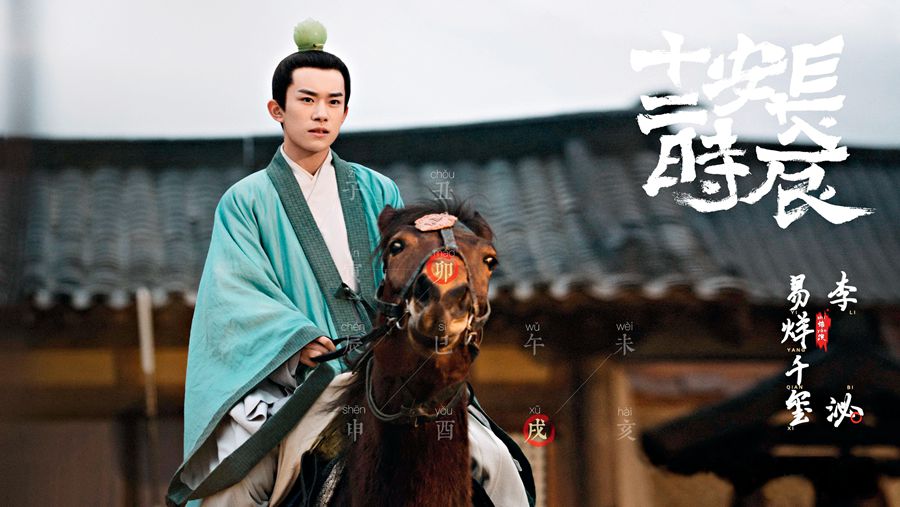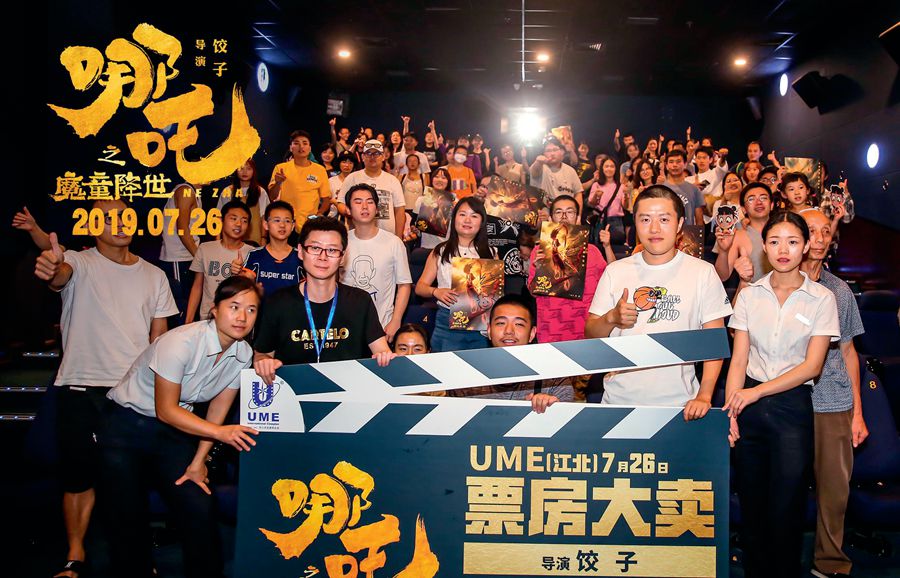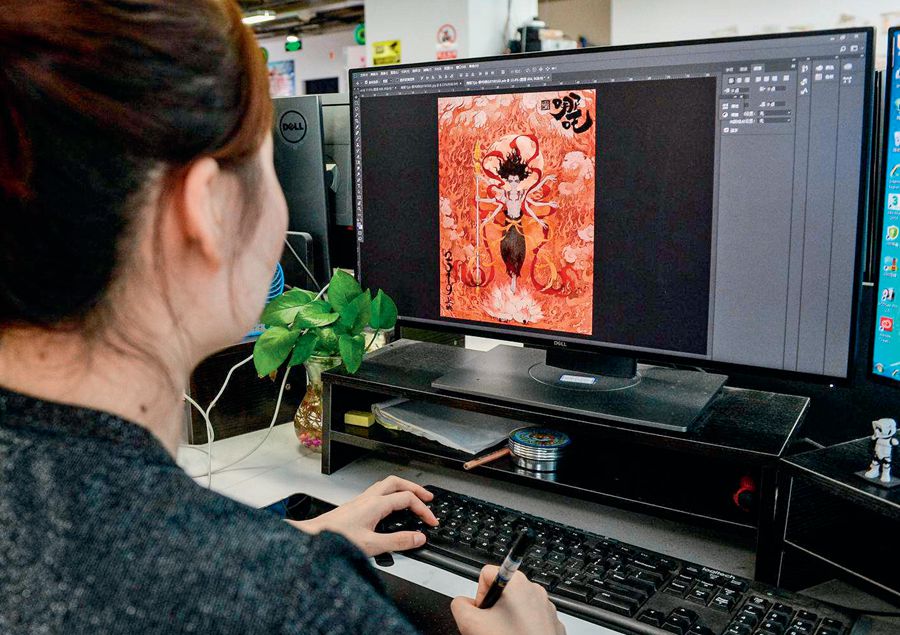LAST July, the period costume drama The Longest Day in Chang’an was aired in many Asian countries such as Japan, Singapore, Malaysia, Brunei, and Vietnam. It also appeared in the form of paid content on international video websites like Viki, Amazon, and YouTube. The play was not only appreciated by Chinese audiences, the appealing ancient charm of the Tang Dynasty also attracted many overseas audiences, causing a substantial increment in consumption of Chinese TV dramas in foreign countries.

An image from The Longest Day in Chang’an.
Chinese films and television dramas have cultivated a large-scale overseas market with a steady increase in their export, diversified genres, and outstanding quality, unveiling a new chapter in the cooperation between countries in the field of broadcast and media entertainment.
Learning from Each Other in Cultural Exchanges
Driven by technologies such as the mobile Internet, big data, and artificial intelligence, consumption of media content has become a common choice for people to enrich their cultural life, and also a channel for the world’s audience to experience Chinese culture. Well produced Chinese TV dramas have created a China fever among the audiences of many countries and regions in the world. It has opened a window for a vivid and comprehensive new understanding of Chinese history and culture, and formed a new kind of international cultural communication phenomenon.
The Longest Day in Chang’an, which has become popular overseas, combines Chinese culture with a compact narrative rhythm, which satisfies the dual needs of overseas audiences to understand traditional Chinese culture while also being entertained. The setting in which the story is set is of a refined cultural style and features the ancient city of Chang’an. The openness and prosperity of the Tang Dynasty (618-907) give the play broad space for an extensive portrayal of traditional cultural symbols. For example, for the costumes of the ladies, the crew adopted nine kinds of flower-and-bird pattern designs prevalent in the Tang Dynasty, as well as the tie-dye technology which was popular at that time. The meticulously designed costumes, elaborately recreated banquet scenes, and intangible cultural heritages incorporated into the plot showcase the highlights of traditional Chinese culture during the Tang Dynasty.
“We really need to have works go abroad and gain international recognition, because our industrial level, equipment, and professional quality are actually on par with that of foreign teams,” said Cao Dun, director of The Longest Day in Chang’an.
Liu Heping, chairman of the judging panel of the Shanghai TV Festival Magnolia Awards, said that the first condition that must be possessed by an excellent TV series is the epochal character. “It is necessary to reflect the spirit of the times, even historical dramas and costume dramas should be relevant to the present era. With a new understanding of history and historical figures, we can keep up with the pace of the times.

A promotional event of the film Ne Zha.
Porcelain Story, a Chinese documentary about looking for Chinese porcelain in Europe and Asia, tracks the spread of Chinese ceramic culture around the world. Jing-Ju Cats, the first domestically produced animation that combines Peking Opera elements with cartoon characters, takes cats as the main character with its optimistic and attractive plot. The documentary China’s Mega Projects – Beijing Subway Network, focuses on the construction of the world’s largest subway network, highlighting the specific feature of modern China. The TV series The Thunder, based on real cases, revolves around a father and son who represent two generations of policemen as they risk their lives in the war against drugs. These various media projects, which are loved in China, are gradually helping foreign audiences understand China.
These productions convey China’s excellent traditional culture or showcase China’s contemporary development, and have refreshed foreign audience’s perception of China. They not only garner a good overseas reputation, an expanding global market, and increasing international cooperation, but also demonstrate the cultural self-confidence of the Chinese in the new era. They boost the global influence of Chinese culture and the world’s recognition of Chinese concepts.
From Import to Export
Nowadays, a large number of outstanding Chinese TV programs have gone abroad and gained countless foreign fans.
Throughout the history of Chinese TV programs, from TV series Pretty Li Huizhen and Operation Proposal to variety shows such as Where Are We Going, Dad? and Running Man, the copyright purchase model is dominant, and the lack of innovation has become a shortcoming of domestic content creation. The copyright dispute of the popular variety show The Voice of China has sounded the alarm for the entire Chinese film and TV industry – the introduction of copyright is only a short-term tactic, and only true innovation can guarantee the vitality of the industry.
Chinese-made TV programs are undergoing a transformation: from imports of productions and copyright purchase to joint development with overseas parties, to independent creation, and to the sale of original Chinese content to overseas companies. With the improvement of the production quality of film and television dramas, domestic TV dramas are increasingly adapted to the international market in the process of going global.
With the rapid growth of China’s economy and cultural soft power, Chinese films and TV dramas have the chance to compete with the world’s top content. Netflix, the world’s largest streaming media platform, has bought at least eight Chinese TV series’ streaming rights for audiences in more than 190 countries and regions. Besides, cultural performances telling Chinese stories, intangible cultural heritages, and temple fairs symbolizing the legacy of Chinese traditional culture have also successfully gone abroad.
Bridges for Communication
Along with the improvement of China’s overall national strength, a growing number of world audiences are wondering what kind of country China is. Not only do the traditional Chinese image symbols such as “emperor” and “kung fu” appear in period costume dramas, but high-quality film and television content reflecting current social reality have also played an important role in displaying the image of China in the new era.

Behind the scenes of the making of Ne Zha.
Aerial China, which overlooks China from an aerial perspective and presents China’s natural and cultural landscapes in three dimensions, not only allows the Chinese to fully understand the history and development of their motherland, but also serves as a medium for the exchange between Chinese and Argentine civilizations, and brings the extensive and profound Chinese culture to the world audience. At the end of 2018, at the launching ceremony of the documentary films Charming Argentina and Charming China jointly produced by the China Media Group and the Argentine National Radio and Television Station, the president of the China Media Group, Shen Haixiong, gave Aerial China, the largest 4K aerial TV production in China to date, as a gift to Argentina. This form of film and television exchange and cooperation helps the people of both countries to know each other and their civilizations better. According to Hernan Lombardi, Argentina’s minister of the federal system of media and public content, through the cooperation of the two crews and through the documentaries, the two sides have reached more common understanding, which is quite meaningful to the people of both countries.
In 2019, Chinese film and television studios and online networks have achieved fruitful results in international cooperation and exchanges. For instance, a number of agreements were signed with South American countries, such as the China-Brazil Film and Television Association Strategic Cooperation Framework Agreement and the China-Argentina Film and Television Association Strategic Cooperation Framework Agreement.
Film and television is one of the most vigorous fields of international exchanges in this era. Beijing and Rio de Janeiro, the two cultural centers that signed the sister city agreement, used a series of excellent audio-visual works to exchange and understand each other, and set up a bridge for communication between the two countries. In the view of Du Feijin, a member of the Standing Committee and director of the Publicity Department of the CPC Beijing Municipal Committee, “This kind of activity should be normalized in the future to make it lasting and more attractive. Through the innovative cooperation in the fields of radio and television and online content, we will add vitality to the development of human civilizations.”
Creating More Excellent Works
During the past two years, through expansion of channels and exploration of new cooperation models, homemade TV dramas have made marked progress on foreign markets. Content creators are actively seeking what kind of dramas will attract more overseas viewers, so as to open a window to explain Chinese culture for the world.
In 2013, Beautiful Daughter-in-Law was broadcast in Tanzania. In 2017, All Quiet in Peking was broadcast online by Netflix. In 2018, A Love for Separation was broadcast in Mongolia and topped audience ratings. In 2019, The Longest Day in Chang’an received much praise worldwide. During the past few years, there have been many excellent realistic masterpieces that reflect today’s China. This phenomenon strongly confirms that original high-quality content is the trend of the times, and improving the quality is the basis of creation.
China’s 5,000-year history has given homemade TV dramas a unique profoundness and significance, and life of the modern era has brought infinite variety and vitality to their content. The values of benevolence, righteousness, courtesy, wisdom, faith, and courage covered in these productions are the focal point that can stimulate the interest of overseas audiences. Yang Shuo, director of Beijing Municipal Radio and Television Bureau, hopes that workers of the film and television industry jointly strive for the development and innovation of the sector in the digital age, seek deeper exchanges and cooperation, provide the people with better products, and showcase the latest achievements in the development of film and television.
In the future, it is expected that more masterpieces focusing on China’s reality and telling China stories will go abroad and let the people of the world better understand Chinese culture.
NIU MENGDI is a reporter at Guangming Daily; WANG HUI is a postgraduate at the School of Languages and Communication Studies of Beijing Jiaotong University.


